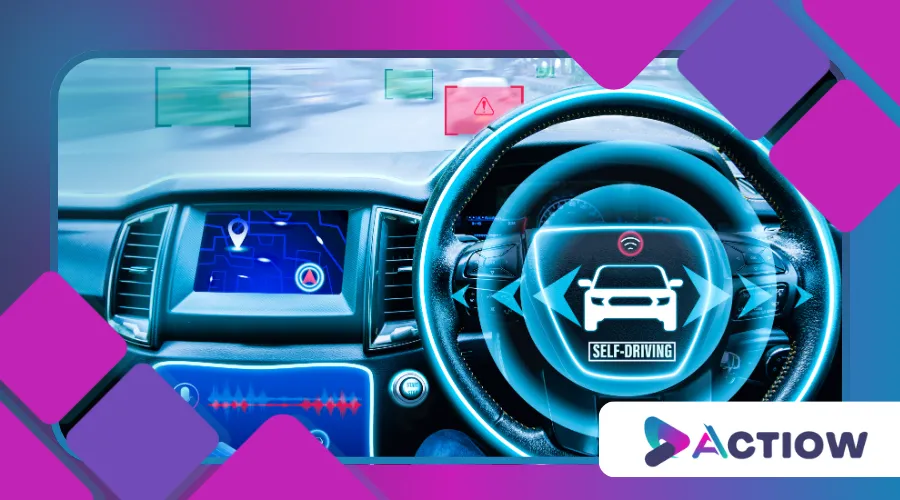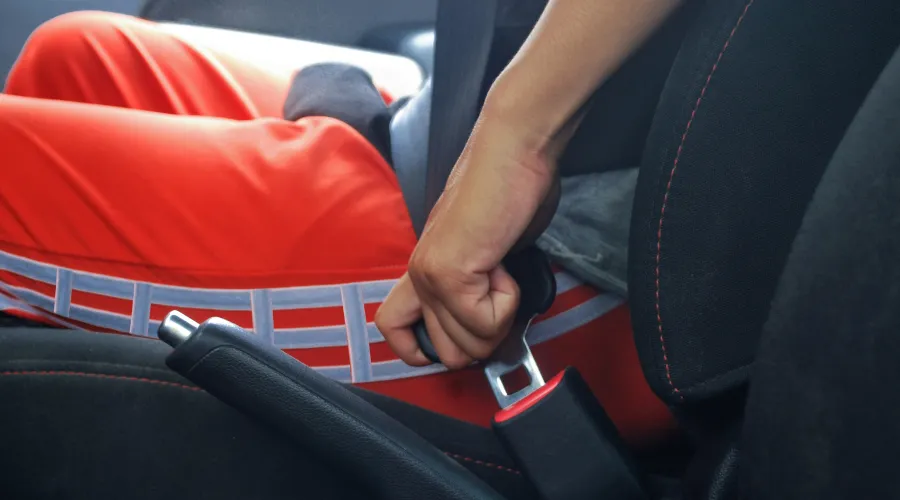The Evolution of Automotive Safety Systems

Anúncios
The evolution of automotive safety systems has transformed how we drive, turning vehicles into intelligent protectors that anticipate and mitigate risks.
What began with rudimentary mechanical fixes has morphed into a symphony of sensors, algorithms, and real-time decision-making, redefining road safety.
Today, cars don’t just carry us—they shield us, adapting to an era where human error meets technological precision.
Anúncios
This journey, spanning decades, reflects not just engineering triumphs but a cultural shift toward prioritizing lives over convenience.
How did we get here, and what’s next?
The Dawn of Safety: Mechanical Beginnings
Imagine a car in the 1950s: a steel behemoth with charm but little regard for occupant protection.
Early vehicles lacked basic safeguards, leaving drivers vulnerable to crashes that were often fatal.
The introduction of seatbelts in the late 1950s marked a pivotal moment.
Volvo’s three-point seatbelt, patented in 1959 by engineer Nils Bohlin, became the gold standard, reducing fatalities by nearly 50% in frontal collisions.
This wasn’t just a strap; it was a mindset shift, proving that engineering could prioritize human survival.
Yet, seatbelts were only the start.
The 1960s brought padded dashboards and collapsible steering columns, designed to absorb impact energy.
These innovations weren’t flashy, but they laid the groundwork for a philosophy: safety as a design principle.
Unlike today’s tech-heavy systems, early solutions were purely mechanical, relying on physics rather than computation.
Their simplicity was their strength, but also their limit—passive systems couldn’t adapt to dynamic road conditions.
As safety standards evolved, increased awareness among consumers led to more stringent regulations.
Organizations like the National Highway Traffic Safety Administration (NHTSA) have played a crucial role in promoting safety innovations and educating the public.
The Rise of Active Safety: Electronics Take the Wheel
Fast-forward to the 1980s, and the evolution of automotive safety systems entered a new phase: active safety.
Antilock braking systems (ABS) debuted, allowing drivers to maintain steering control during emergency stops.
By pulsing brakes faster than any human could, ABS reduced skidding crashes by 20%, according to a 1996 Insurance Institute for Highway Safety study.
This was no small feat—it showed electronics could outsmart human reflexes.
Airbags followed, inflating in milliseconds to cushion occupants during collisions.
By the 1990s, dual front airbags became standard in many vehicles, slashing head injury risks.
These systems weren’t just reactive; they were proactive, sensing crash severity and deploying accordingly.
The shift from passive to active safety marked a leap—cars were no longer static shields but dynamic responders, analyzing and acting in real time.
| Era | Key Safety Innovation | Impact |
|---|---|---|
| 1950s-60s | Three-point seatbelt | Reduced fatalities by ~50% in frontal crashes |
| 1980s-90s | ABS, Airbags | 20% fewer skidding crashes; lower head injury risks |
The integration of technology in safety systems also led to improved crash test methodologies, enhancing vehicle designs.
Organizations like Euro NCAP have established rigorous testing standards that push manufacturers to prioritize safety in their designs.
The Digital Revolution: Sensors and Connectivity
By the 2000s, the evolution of automotive safety systems embraced digital intelligence.
Electronic stability control (ESC) became a game-changer, using sensors to detect and correct loss of traction.
Mandated in the U.S. by 2012, ESC prevented an estimated 7,000 fatalities annually, per the National Highway Traffic Safety Administration (NHTSA).
This wasn’t just tech—it was a guardian angel, intervening before drivers even realized they were in danger.
Connectivity amplified this trend.
Vehicles began “talking” to each other via vehicle-to-vehicle (V2V) communication, sharing data on speed, position, and road conditions.
Picture a highway where cars warn each other of a sudden slowdown ahead, preventing pileups before they start.
This networked approach, still in its infancy, hints at a future where crashes are outliers, not norms.
The digital era didn’t just enhance safety—it redefined it as a collective effort, not an individual one.
+ Concept Cars: Models That Inspired the Future of the Industry
As technology continues to advance, the potential for enhanced safety through connectivity grows.
For instance, companies are exploring the use of 5G networks to improve real-time communication between vehicles and infrastructure.

AI and Autonomy: The New Frontier
Today, the evolution of automotive safety systems is synonymous with artificial intelligence (AI).
Modern cars are rolling supercomputers, equipped with cameras, radar, and LIDAR to monitor their surroundings.
Advanced driver-assistance systems (ADAS) like adaptive cruise control, lane-keeping assist, and automatic emergency braking (AEB) are now standard in many models.
Tesla’s Autopilot, for instance, uses AI to navigate complex urban environments, reducing driver workload and crash risks.
Consider this scenario: a distracted driver approaches a pedestrian crossing.
The car’s AEB system detects the walker, calculates their trajectory, and stops the vehicle before the driver even reacts.
This isn’t sci-fi—it’s happening now, with AEB reducing rear-end collisions by 27%, per a 2023 Euro NCAP report.
AI doesn’t just react; it predicts, learning from vast datasets to anticipate risks humans might miss.
Autonomous vehicles take this further.
Waymo’s self-driving taxis, operating in cities like Phoenix, log millions of miles with fewer incidents than human-driven cars.
Their secret? A neural network that processes 360-degree sensor data in milliseconds, making split-second decisions no human could match.
The evolution of automotive safety systems here feels like a sci-fi novel, but it’s grounded in code and silicon.
| Technology | Function | Benefit |
|---|---|---|
| ESC | Corrects traction loss | Prevents ~7,000 deaths/year (NHTSA) |
| AEB | Auto-stops to avoid collisions | 27% fewer rear-end crashes (Euro NCAP) |
As AI technology continues to develop, its integration into safety systems will likely become more sophisticated.
Future advancements may allow vehicles to learn from their environments and improve safety measures over time.
The Human Factor: Challenges and Ethics
But is technology enough?
The evolution of automotive safety systems faces a human hurdle: trust.
Drivers often resist over-relying on tech, fearing it might fail or erode their control.
A 2024 AAA survey found 68% of Americans are skeptical of fully autonomous vehicles, citing concerns about system errors.
This skepticism isn’t baseless—AI, while powerful, isn’t infallible.
A 2018 Uber self-driving car fatality highlighted the risks when algorithms misinterpret sensor data.
Ethics complicates things further.
In a split-second crash scenario, should an autonomous car prioritize its occupants or a pedestrian?
These dilemmas demand not just tech solutions but philosophical ones.
Carmakers like Mercedes-Benz are tackling this, programming systems to minimize harm universally, but no solution feels perfect.
The evolution of automotive safety systems, then, isn’t just about circuits—it’s about reconciling human values with machine logic.
++ The Evolution of Electric Cars: From the 19th Century to Today
Public discussions on these ethical dilemmas are crucial for shaping the future of automotive safety.
Engaging stakeholders, including consumers, engineers, and ethicists, can help create guidelines that prioritize safety and moral considerations.

The Road Ahead: A Safer Horizon
Looking forward, the evolution of automotive safety systems points to a world where crashes are rare.
Vehicle-to-everything (V2X) communication could create “smart roads” that guide cars through traffic, reducing congestion and collisions.
Imagine a city where traffic lights, road signs, and vehicles sync seamlessly, like a flock of birds moving as one.
This analogy isn’t far-fetched—5G networks are already enabling real-time data exchange for such systems.
Biometric monitoring is another frontier.
Future cars might track driver heart rates or eye movements, detecting fatigue or distraction before it’s too late.
Hyundai’s 2024 concept car, for example, adjusts seat positions and alerts drivers if it senses drowsiness.
These innovations blur the line between car and caregiver, prioritizing prevention over reaction.
Yet, challenges loom.
Cybersecurity risks grow as cars become more connected—hackers could exploit vulnerabilities in V2X systems.
Cost is another barrier; advanced safety tech often comes with premium price tags, limiting access.
Policymakers must balance innovation with equity, ensuring safety isn’t a luxury.
Collaboration between automakers, tech companies, and governments will be essential to address these challenges effectively.
Creating frameworks that promote safety while ensuring accessibility can lead to a more secure future for all road users.
A Cultural Shift: Safety as a Right
The evolution of automotive safety systems reflects more than technological leaps; it’s a cultural revolution.
Decades ago, safety was an afterthought, a checkbox for regulators.
Today, it’s a right, demanded by consumers and enforced by global standards like Euro NCAP and NHTSA ratings.
This shift didn’t happen in a vacuum—it stemmed from advocacy, research, and a collective refusal to accept preventable deaths.
Take the example of a young family driving a 2025 SUV equipped with ADAS.
When a deer darts across the road, the car’s AEB and lane-keeping assist intervene, averting a crash.
The family doesn’t just survive—they thrive, unaware of the tech that saved them.
This is the promise of modern safety systems: invisible protection, woven into every mile.
Advocacy groups continue to play a vital role in pushing for higher safety standards and regulations.
Their efforts ensure that the importance of safety remains at the forefront of automotive design and policy-making.
For more information on automotive safety advancements, you can visit the Insurance Institute for Highway Safety (IIHS).
Conclusion: What’s Next for Safety?
The evolution of automotive safety systems is a testament to human ingenuity, blending mechanics, electronics, and AI to save lives.
From seatbelts to self-driving cars, each step has pushed boundaries, making roads safer than ever.
Yet, the journey isn’t over.
As we embrace connected, autonomous futures, we must address trust, ethics, and accessibility to ensure safety for all.
What will the next chapter hold?
Only time—and innovation—will tell.
